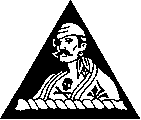

|
|---|
The B-29s of the 313th Bomb Wing were based at North Field. The 313th Bomb Wing included the 6th, 9th, 504th and 505th Bomb Groups. Almost immediately after the invasion, over 15,000 Seabees (the 6th and the 107th Naval Construction Battalions) began constructing North Field by converting the old Japanese airfield field. Although most of the original Japanese base was buried, many of the original buildings and the service area were made a part of the northwest corner of North Field. The Seabees were able to construct much of the base using crushed coral, which was available on the island. Starting with the northernmost strip, the Seabees constructed four airstrips, designated A ("Able"), B ("Baker"), C ("Charlie") and D ("Dog"). In order to pave the runways and roads, the Seabees constructed an asphalt plant. The first 6th BG airplanes landed at Tinian on January 18, 1945, less than 4 months after construction began. The fourth runway was added sometime after May. Although the plateau was almost flat, the Seabees had to insure that there was no slope with an incline of more than 2%. Any more would have been too much for planes or tugs to handle. However, no runway is perfectly flat. The runways at North Field slope upward from west to east. On the west side, the land gently slopes upward from the ocean such that the runways start at about 50 feet above sea level (ASL). By midfield, the runways are about 80 feet ASL. On the east side, they are about 100 feet ASL. Further east, the land quickly slopes toward the ocean. |
|
Here is a picture, from the northwest corner facing southeast, of North Field under construction. The presence of B-29s in the hardstands indicates that the field is in use. Nevertheless, only three runways have been built (which means that the picture was taken before May, 1945). And, even more interesting, the airstrips do not appear to be paved yet. This would have made for very primitive operating conditions, with an increased risk of rock damage and dust, |
|
|
This is what the Seabees started with - mostly empty sugar cane fields. The small Japanese airfield in the center was integrated into the northwest part of Tinian North. |